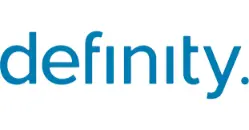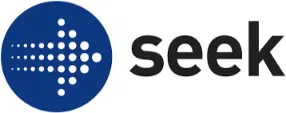

We specialise in contemporary change management and leadership, enabling you and your team to develop the confidence and capability to handle fast-paced change. Our crucial and contemporary content on agile change management is delivered in practical, bite-sized modules. With online self-paced courses and programs, we can help you build agility and change capability – fast.
"*" indicates required fields






























We specialise in contemporary change management and leadership, enabling you and your team to develop the confidence and capability to handle fast-paced change.
Select your desired option below to share a direct link to this page.
Your friends or family will thank you later.
Session 1: Emerging Leaders, tools for change
As signalled at the end of the session we said we would pick up any questions not answered and cover off in a blog post. Without further ado…
Q: How do we bring people along on the journey in design thinking where there’s friction / people within the team that are not familiar with it and stuck in old ways.
A: This one is a bit of carrot and stick. If you have made it an organisational decision that design thinking will be part of your process going forward, you do need to ensure you have introduced it properly and communicated what they consequences are of it not being used.
That said, part of that might be using design thinking tools and approaches to explore resistance to new ways of working! If design thinking is about exploring the problem, it could be really effective to use it to answer this question. In doing so you may find some reasons why people are experiencing friction (concerns about relevance, their expertise not being respected, their unfamiliarity) and with that find out what they need. Session three covers resistance to change so we can dive deeper then!
It’s also worth exploring if there is resistance to design thinking approaches. This occurs when people have had a previous experience with design thinking tools such as personas and journey mapping that is not regarded as positive or valuable. In these instances, reframe the activity to something that will resonate more deeply with them, for example: We are running a workshop to discover more about your pain points.
Q: How do you keep an emotionally complex team afloat without taking too much personal pressure.
A: I would first question why you feel the need to keep the team afloat. It’s one thing to be aware of your teams’ emotional needs, especially in respect to trauma informed leadership, but its another thing to feel responsible for a full teams’ emotions. Your role is to lead, not carry. It might also be worthwhile having some private conversations to understand the nature of the emotional complexity. Sometimes just having the situation acknowledge, heard and seen is sufficient to take the pressure off. However, if you are leading a team that for a reason outside of your control in the organisation is emotionally complex, I think you would want to really focus on your resilience practices. We cover this in session 2.
Q: Can you talk about moving from perfection to failure in teams that are based offshore and have a tendency to hide mistakes to avoid the perception of failure.
A: This can be very tricky, however one thing that is in your favour is that those cultures often appreciate really clear boundaries and detailed definition of ‘done’. This reduced the likelihood of errors. Often, the only way people who have a different cultural experience of safety can change that perception is through repetition and role modelling. Being consistent in you address errors and also being clear upfront about your expectations.
Opening conversations about failure may need to be reframed as retrospectives. In your team meetings, kick off discussions about what went well, what didn’t go so well (so you avoid the word ‘failure’ which can be confronting) and focus on the lessons learned and what can be done better and/or differently.
Q: How do you balance your beginner mindset when you come up against others who are very expert focused in their mindset/ ways of experiencing.
A: Jen here: one of the ways I like to do this is seek permission to experiment. So, “Hi Lena, I understand you are pretty confident in your assessment of situation. Would you mind if we play with the alternatives for 30 minutes. I’m curious if we tried a different approach whether there would be a different outcome?”
When you ask a person permission to think differently its often very difficult to say no. It can happen of course, and then you have to ask yourself are you in the right place 😉
Q: How does imposter syndrome play out in this dynamic?
Great question: In some ways imposter syndrome is the flipside of beginner’s mindset.
It’s an opportunity to reframe “I don’t know enough and shouldn’t be in this role”, to “I don’t know enough (YET) and that’s the very reason why I am in this role.
Struggling with imposter syndrome does go hand in hand with experiencing shame (I am not worthy; I am not relevant) – and so the inclination to be very self critical will be high. While it is normal and valid to have doubts about your ability as an emerging leader, you need to use self-compassion as a way to keep on moving!
Q: Done is so often determined by the audience if you want to be listened to or achieve the credibility that delivers change. How can this best be addressed.
A: This speaks to the delicate balance of managing expectations in change. You’d be surprised by how much credibility you can achieve by being firm with “No, or not yet, or this is what you can expect in this period of time” as opposed to gathering a long list of requirements that won’t be delivered. Good change leaders get on the front foot of this and are open about where there are expectations that won’t be delivered.
Managing expectations upfront is important. Achieving credibility occurs when you have clear measures in place so a conversation about ‘what does good look like?’ can uncover clues. With the measures agreed, report on progress regularly to demonstrate the value, the outcomes and the progress.
Q: How do you prioritise features in a MLP – MLPs always seem to result in scope creep and not staying minimum
A: This is the role of strong product ownership, program governance. If you are using Agile as an approach to product and process releases, there should be a way of weighting the value of the features and building it into the team’s work. If the teams WIP limits are being exceeded, then it should be escalated to the product owner or program director.
A gentle reminder that M stands for Minimum, and that iteration can be considered afterwards. Reiterate a focus on the agreed success measures. If it’s not, the focus remains on what will be measured. Consider the mantra for performance and expectations:
Q: What are some tools we can use to embrace failure
A:
For many, failure is seen as the opposite to success (reinforced by a schooling system where it’s pass or fail). The word ‘failure’ itself can be confronting.
Let’s reframe this. It’s about experimenting and embracing the lessons learned. On the way to success, I met failure. The key here is to capture the lesson!
Capture it in a retrospective style conversation – celebrate what went well and what progressed (because our brains love dopamine 😊 ) and talk about what didn’t go so well, what can we do differently or better next time.
Make these a regular thing so it becomes safe to talk about your ‘misteaks’ – building a culture of iterative learning and psychological safety as you go.
Reflect ➡️ Capture Lesson ➡️ Iterate ➡️ Experiment Again
This is key for a mindset that leans into agility, uncertainty and yes…failure.
Other examples:
Q: Any thoughts on the expectations of contract staff v FTE and failure.
A: This really speaks to how the organisation treat contract staff. If they are well integrated and part of the organisation then no, there’ll be no difference. However, if the use of contract staff is more about the flexibility of terminating contracts, yes, we would agree! There is not the requirement or obligation to performance manage as it were.
Contract employees usually stay true to the statement of work, the agreed outcomes and deliverables. In some situations where an organisation is looking to improve its agility, a contractor could be encouraged to experiment with different approaches to nudge FTE who are set in their ways. Sometimes, a contractor comes in like a ‘breath of fresh air’ with novel ideas that can inspire FTE.
Q: How do you practice self-compassion without lowering the quality of work you produce.
A: For this to be a real outcome then the inverse must be true. Self-criticism must improve work. It rarely does though. It just makes for a difficult work life. Being kind to yourself may mean taking more time to do something, or accepting you are on a learning curve, but I’m not sure that being self-critical speeds you up or moves you up the learning curve faster. It just makes you feel crappy!
Q: Doesn’t self-compassion draw away from the amount of time we have to work on things? Where do we draw the line on self-pity and wallowing.
A: Self-compassion, far from taking time away from work, can actually enhance our ability to lead change effectively. When we practice self-compassion, we acknowledge our struggles without being consumed by them, which helps us maintain perspective, stay resilient, and avoid burnout. This becomes especially crucial in change leadership, where stress, uncertainty, and setbacks are inevitable.
Self-compassion isn’t about self-pity or wallowing in difficulties. In fact, it’s quite the opposite. Self-pity focuses on the problem and reinforces a sense of helplessness, while self-compassion encourages us to recognize our humanity, accept that mistakes are part of the process, and then move forward with renewed energy. It’s about allowing ourselves a moment to regroup and refocus, not dwell on the negative. Rather than a time sink, it’s an investment in long-term effectiveness and well-being.